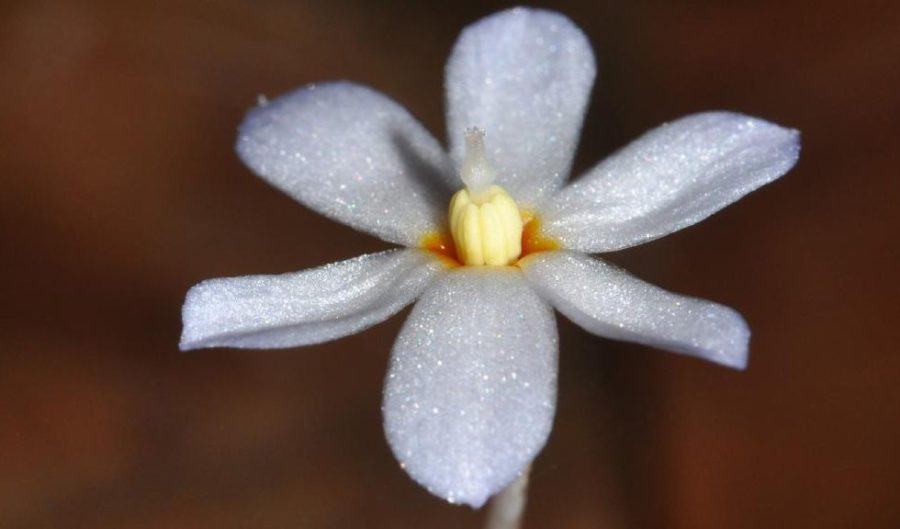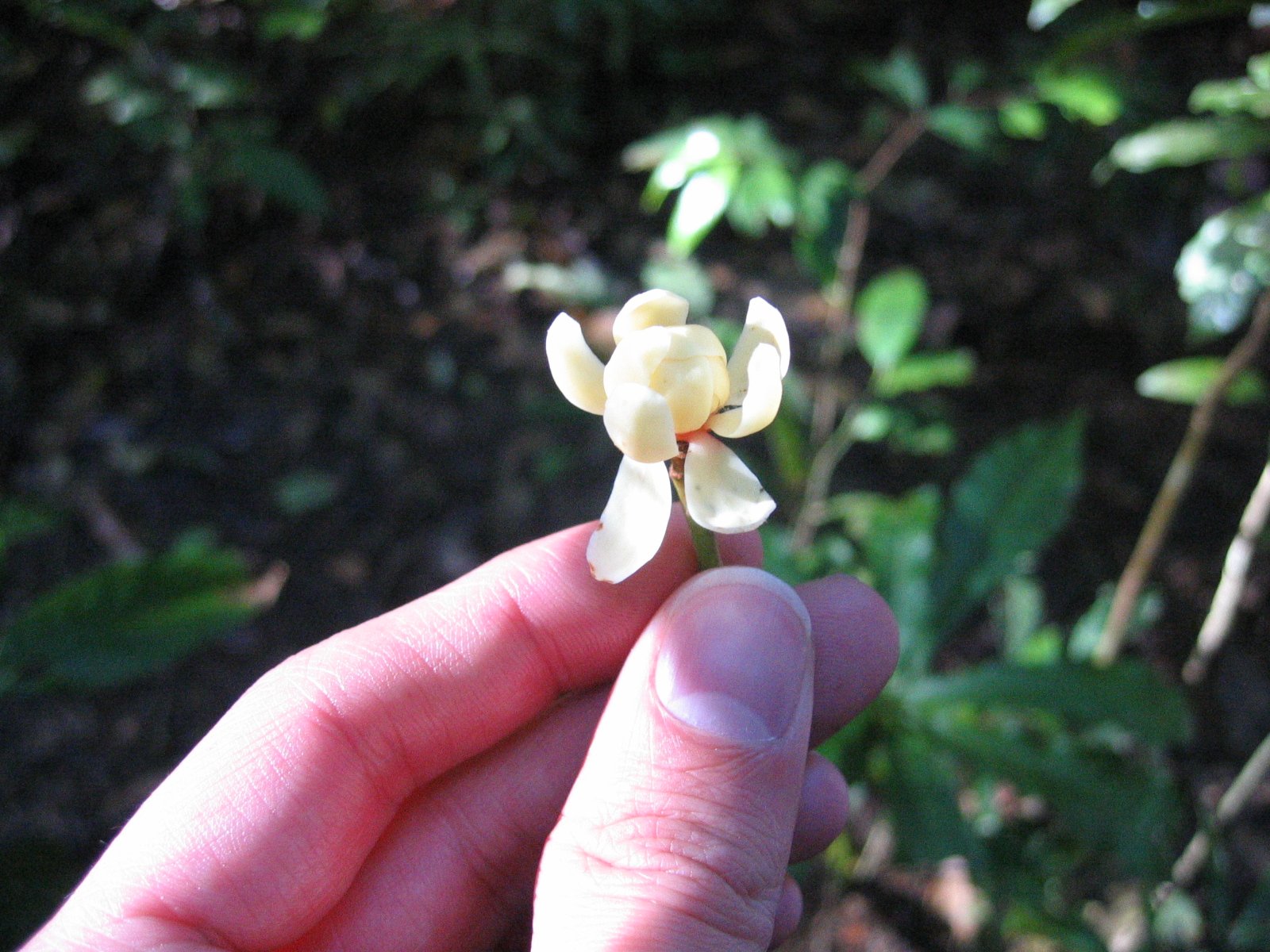The idiot fruit tree

It has the scientific name of Idiospermum australiense and occurs nowhere else in the world but the World Heritage-listed rainforests of North Queensland, with its biggest remaining population in the Daintree.
However, it’s the common names that reveal a lot about this unusual tree; it’s known as the ‘idiot fruit tree’ for its idiosyncratic nature (‘idiot’ being a mistranslation of the Ancient Greek word ‘idios’ meaning individuality or peculiarity), and as ‘the green dinosaur’ in recognition of its ancient lineage. And one more odd fact: it bears the largest single seed of any tree in Australia, about the same size as a human fist.
The tree was first discovered by Europeans in 1902 by German botanist Ludwig Diels who documented and collected its flower and took it back to the Berlin Herbarium. But that specimen was destroyed in a fire in 1943 caused by a bombing raid by the Allies.
For several years botanists failed to recognise the tree’s uniqueness, arguing that Diels’ discovery was merely a garden plant that had somehow made its way into Queensland’s wet tropics.
With simple leaves and cream-to-rose coloured flowers high in the canopy, indeed the tree was hard to distinguish from any other average evergreen.

“It wasn’t until the 1970s when John Nicholas, a Daintree grazier, woke up one morning to find that two or three of his cows had died, that people came to know the Idiospermum australiense,” explained Stuart Worboys, a botanist at the Australian Tropical Herbarium. “He actually believed his cattle were being poisoned. So he called in the police, the police called in the government vet [Doug Clague] and the vet did the autopsy.”
Doug found Idiospermum australiense seeds (swallowed whole) in the cows’ stomachs. Prior to the cows death, it had reportedly been seen having spasms. What plant could be responsible for such a reaction? Doug immediately sent the seeds to the Queensland Herbarium to be identified.
“They told him he’d made the botanical discovery of the century,” Stuart said. “It’s the only member of its family in the Southern Hemisphere and it’s restricted to about 2300 hectares of the Wet Tropics World Heritage Area in the Daintree. Because it’s so divergent from most other plants it greatly increases the biodiversity of the Wet Tropics.”
The oldest known fossils of the tree date back 120 million years, which, Stuart explained, is an ancient lineage for flowering plants.
“The flowers remain very little changed [from] that 120 million-year-old fossil. The massive seeds produce a seedling that’s 80cm to a metre tall,” he said. “I would guess that the seedling waits there for years, even decades, until the there’s a gap in the canopy of the rainforest and it gets enough light to be able to grow and take its place in the forest.”

